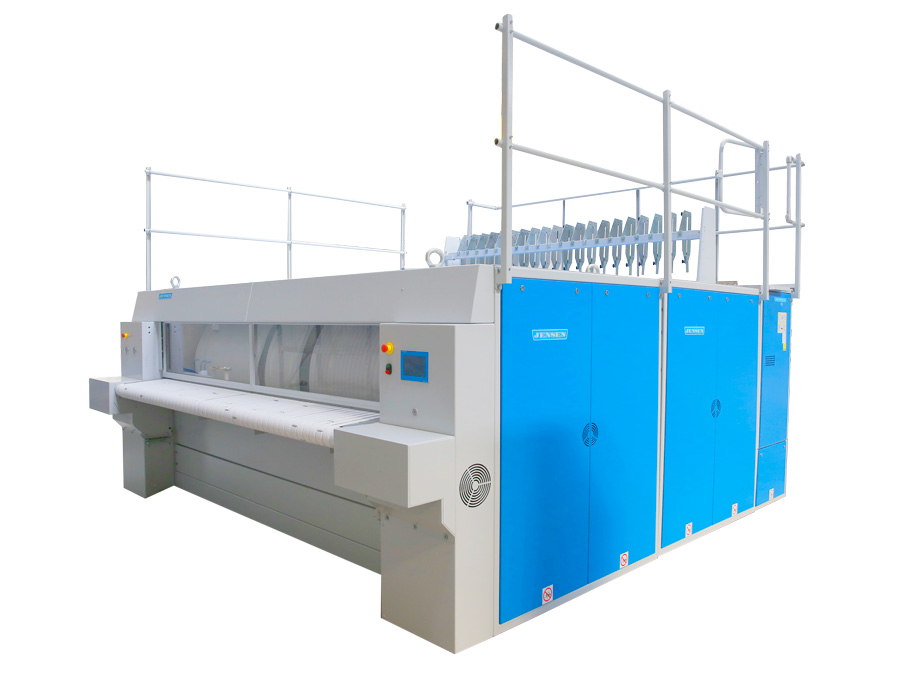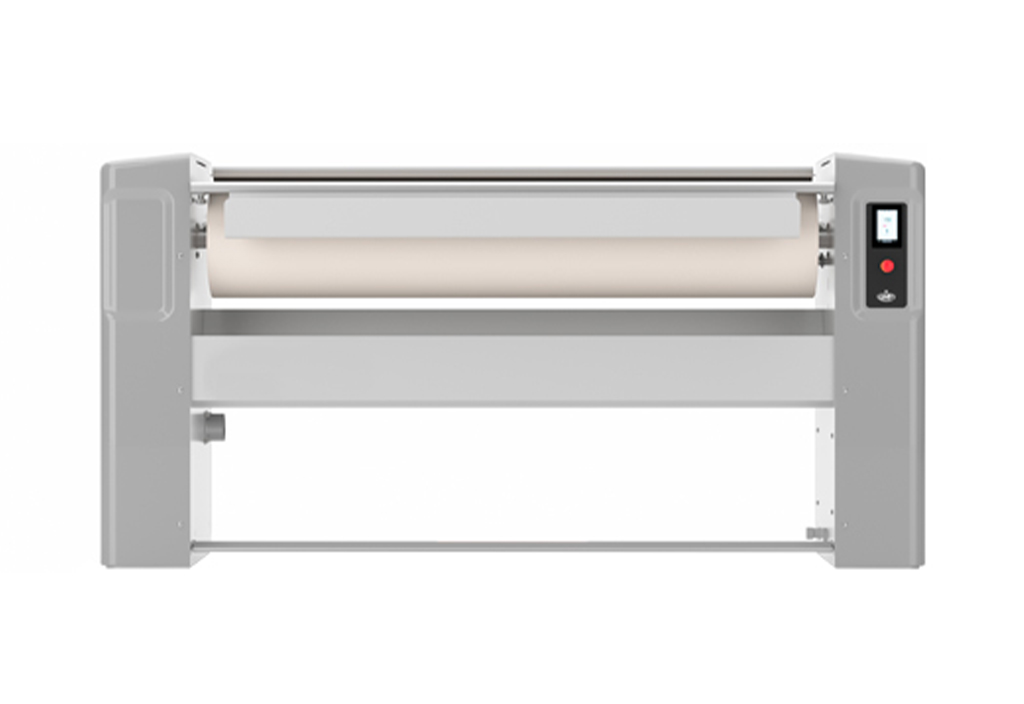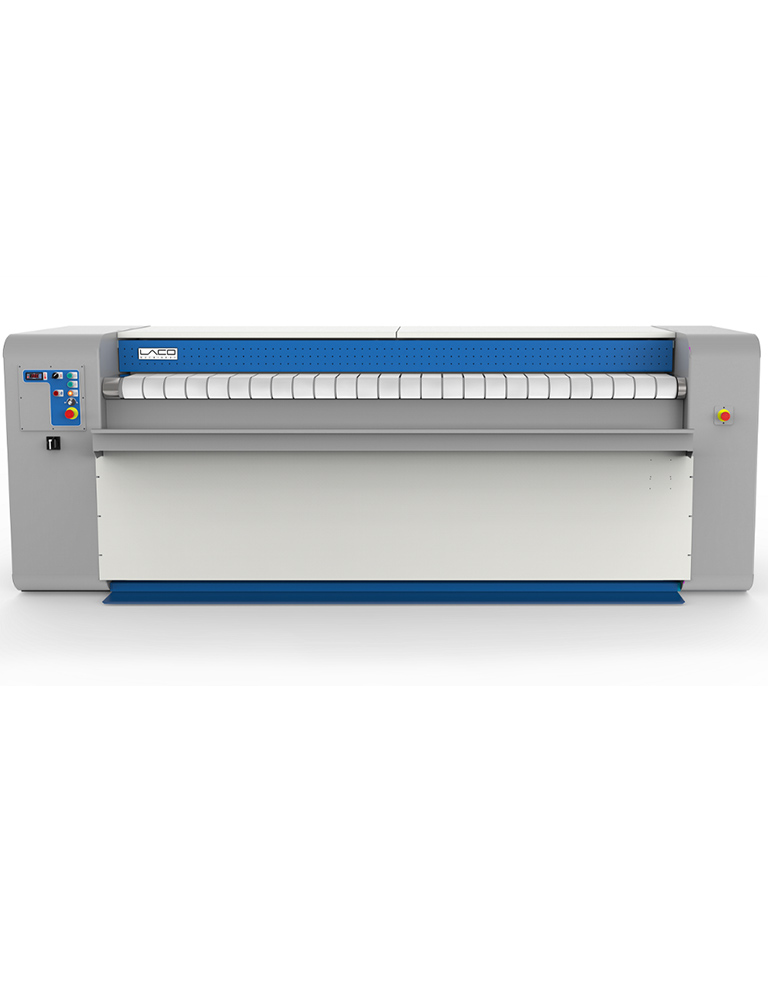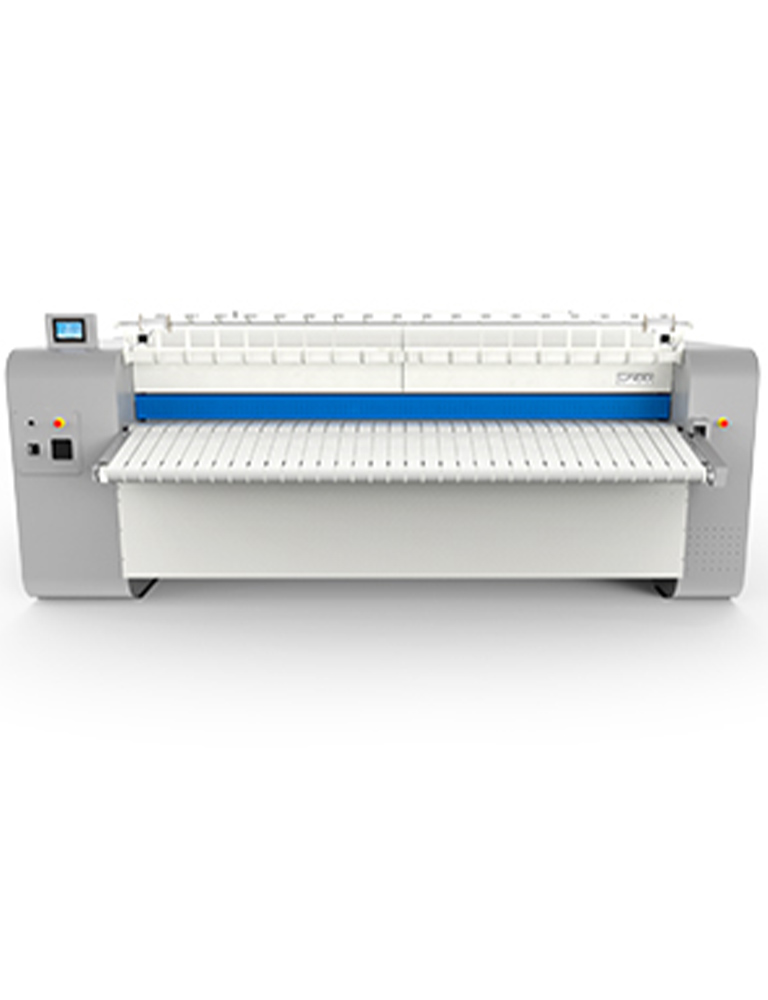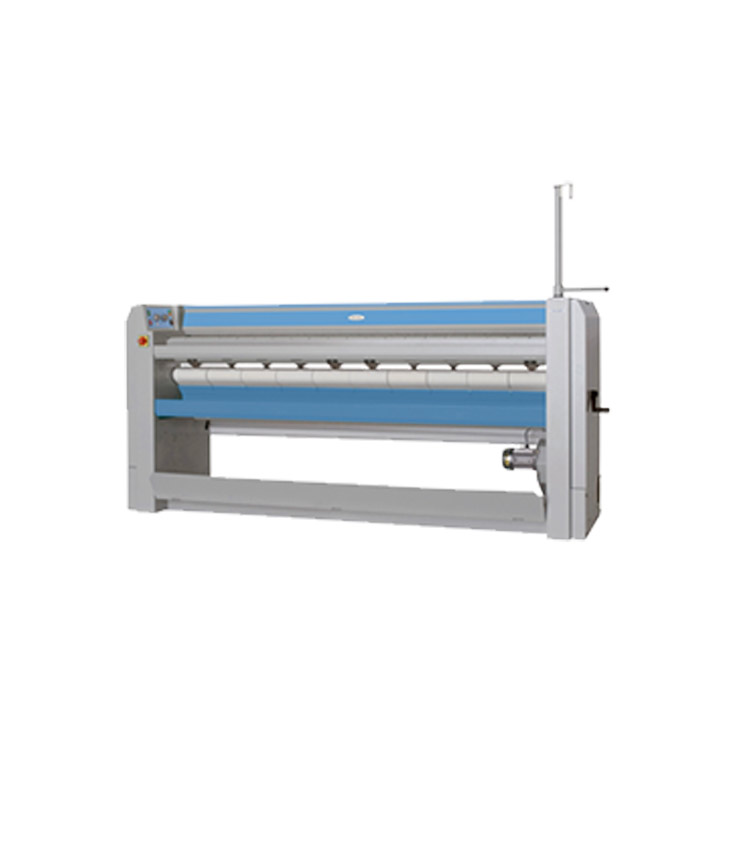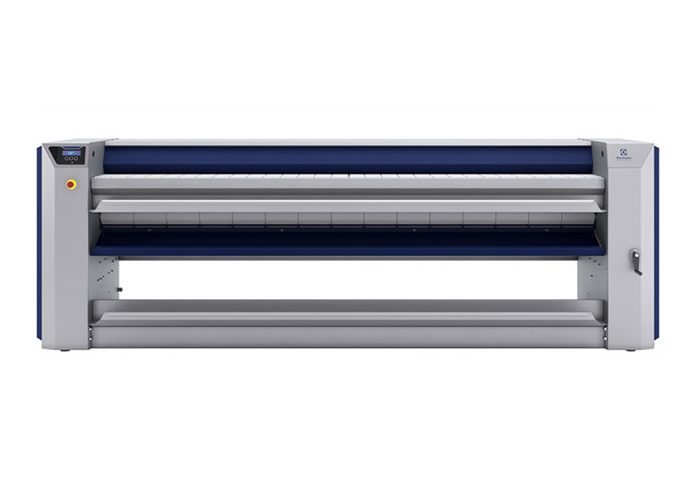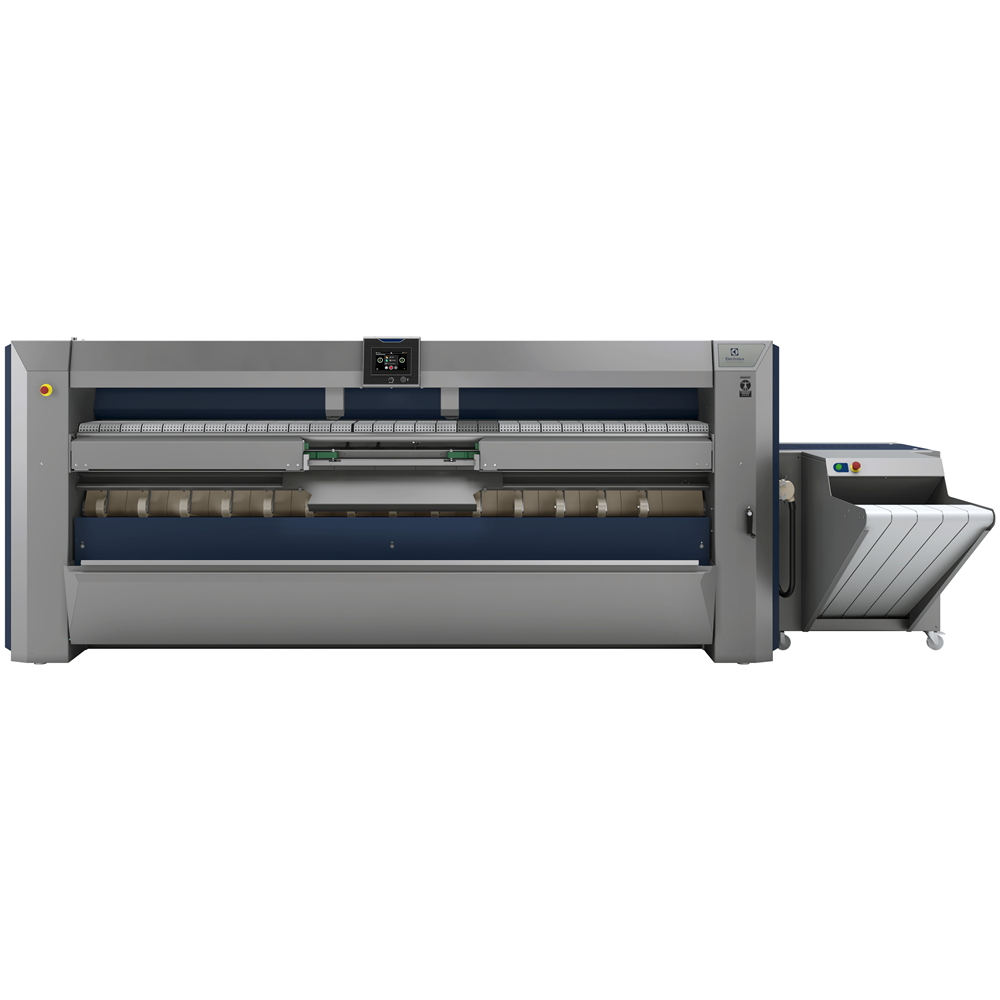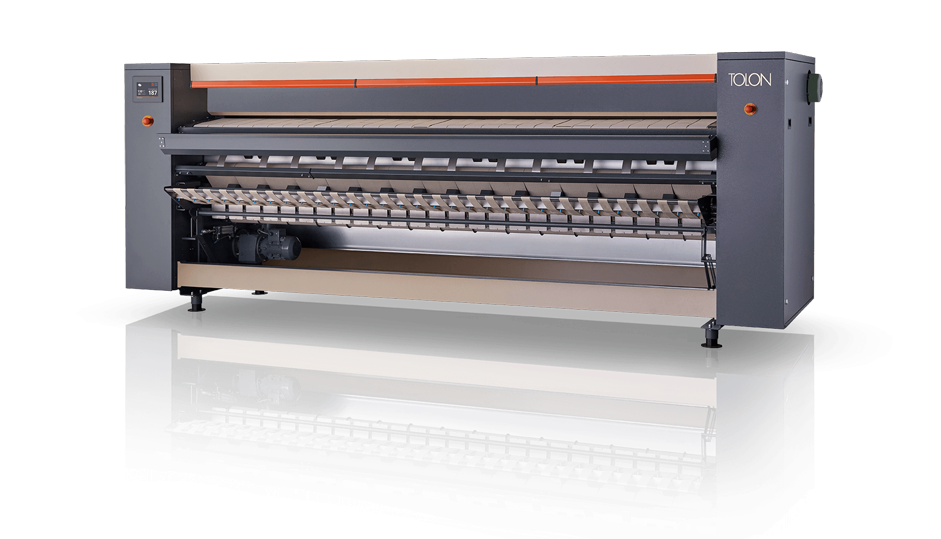Key Elements for Effective Linen Ironing
Effective linen ironing requires a few essential elements, regardless of the chosen method:
- Moisture to loosen the fibre allowing an easier reshaping
- Hot surface to warm up the fabric to reshape & fix it flat
- Mechanical action, being pressure & movement, to flatten the item
- Surface to allow homogeneous pressure of the item to iron
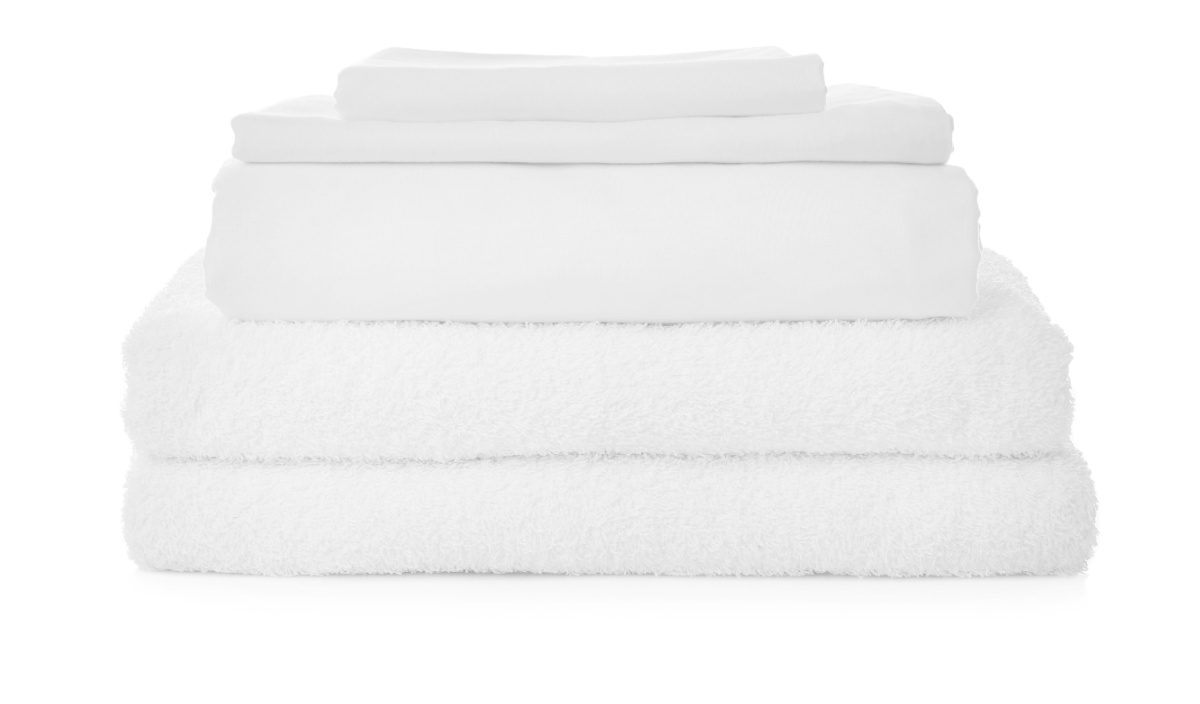
Hand Ironing
Precision for Low-Volume Needs
At home most people would use a hand ironer & ironing table to process low volumes flatwork. The hand ironer generates steam & heat, with the operator creating the mechanical action against the ironing board, flattening the linen.
We stock Pony’s range of hand ironers & ironing stations, which offer higher volumes of steam to finish twice as fast compared to domestic solutions, while utilising a vacuum ironing surface to remove moisture & keep items in place.
In most professional scenarios, hand ironing linen is simply too labour intensive and to improve output, we normally recommend dedicated flatwork ironer. These are available in 2 types of technologies, chest or cylinder heated.

Chest Heated Flatwork Ironer
Efficient Linen Pressing with Chest Heating
This method employs a heated chest to press linen against a moving padded roller, also known as a roller ironer. It represents the simpler of the two flatwork ironer technologies and boasts lower long-term maintenance requirements. However, it’s worth noting that there are some drawbacks, including the potential for generating a “shining” effect on linen due to friction against the static chest. Additionally, these machines often require more space compared to the alternative cylinder-heated models designed for compact installations.
We offer a selection of four main models, informed by our decades of experience in the laundry industry.


Our range of chest heated ironers
250mm diameter
Available in 1400mm width
Our only 1 phase model
Low volumes of max 25 KG per hour
Kept in stock & available with quick delivery times
300mm diameter
Available in 1600 & 2000mm widths
Requires 3 phase
Low volumes of max 50 to 60 KG per hour
Kept in stock & available with quick delivery times
800mm diameter
Available in 3000 or 3300mm widths
Requires steam or gas for heating
High volumes of max 150 to 200KG per hour
Special order & build to customer specification
1200mm diameter
Available in 3000 or 3300 or 3500 widths
Requires steam or gas for heating
High volumes of max 200 to 400KG per hour
Special order & build to customer specification
The two smaller models with 250/300 mm diameter rollers are typically found in small on-premise laundries (OPLs). They are well-suited for sites with low output in remote areas, offering a simple and low-maintenance solution. It’s important to note that linen should be pre-dried to 15-20% RMC when using these models.
On the other hand, the two larger models with 800/1200 mm diameter rollers are commonly employed in high-production OPLs or central laundries. These setups often include feeders and folders for automation, enabling the processing of large volumes of flatwork in one or multiple shifts. Notably, linen does not require pre-drying and can go directly from the washer to the ironer when using these larger models.
Cylinder Heated Flatwork Ironer
Compact and High-Output Linen Ironing
This uses a heated cylinder & nomex belts, the nomex belts wrap around the cylinder to increase contact surface & are tensioned to provide pressure. Also know as calendar or drying ironers, this solution allows a compact installation with a higher output per m2 compared to chest heated alternatives. Maintenance is normally higher, however increase in production & lower footprint normally outweigh maintenance costs when production is under 300KG per hour.
There are many variations, however through our decades of experience in laundry, we promote the 3 models below.


Our range of cylinder heated ironers
330mm diameter
Available in 2065mm width
Requires 3 phase & available in gas or electric heat
Low volumes of max 50 KG per hour
Kept in stock & available with quick delivery times
Manual feeding / folding
479mm diameter
Available in 2600 & 3200mm widths
Requires 3 phase & available in gas or electric heat
Medium volumes of 50 to 100 KG per hour
Special order & build to customer specification
Manual feeding / folding
479mm diameter
Available in 2600 & 3200mm widths
Requires 3 phase & available in gas or electric heat
Medium volumes of 50 to 100 KG per hour
Special order & build to customer specification
Full automation
600mm diameter
Available in 2600 or 3300mm widths
Requires 3 phase & electric or gas for heat
High volumes of max 100 to 200 KG per hour
The smaller models with 330 / 479 / 600 mm diameter rollers are generally found in small to medium on-premise-laundries or central laundries who are after the best result. Linen needs to be pre-dried to 20 to 40% RMC pending the diameter, this also helps increase production.
Automation Solutions
Optimising Efficiency with Automation
Our smaller chest and cylinder heated ironers (250/300/330mm diameter) are designed for single-operator use in small applications. In most cases, linen folding is required, and linen may need to be fed twice to achieve a superior finish.
For models with diameters ranging from 479 to 1200mm, we offer both manual and automated options. However, due to labor costs in Australia, we typically recommend full automation to maximize production and ensure consistent results. We also advocate for direct processing from the washer to the ironer to reduce double handling and labor costs.
